MR exhibitors focus on elastography, innovative design
Physicians have used palpation regularly as a diagnostic technique since the days of the ancient Greeks. Up to now, the potential value of this method has been explored in the imaging field only by ultrasound research teams, but at this year’s ECR technical exhibition, delegates can see for themselves how the same principles may be combined with MRI to improve diagnosis in patients with liver disease.
Physicians have used palpation regularly as a diagnostic technique since the days of the ancient Greeks. Up to now, the potential value of this method has been explored in the imaging field only by ultrasound research teams, but at this year’s ECR technical exhibition, delegates can see for themselves how the same principles may be combined with MRI to improve diagnosis in patients with liver disease.
GE Healthcare is demonstrating a new application developed for the Optima MR450w wide-bore scanner. Called MR-Touch, it uses elastography, or low-frequency sound waves, to identify differences in the stiffness of healthy and diseased tissue. The results are superimposed on a conventional MR image to identify areas of fibrotic tissue.
This fibrosis will normally be caused by hepatitis or alcohol abuse, but can be a consequence of many different disease processes, said Guillermo Zanolli, MR modality manager with GE Healthcare.
“The normal method for identifying fibrosis in the liver is a biopsy, but that is painful, expensive, and can lead to other morbidities,” he said. “Another problem is that the tissue may be taken from the wrong site and not give any useful information. This option will both reduce the need for biopsies and make sure that those taken produce more reliable results.”
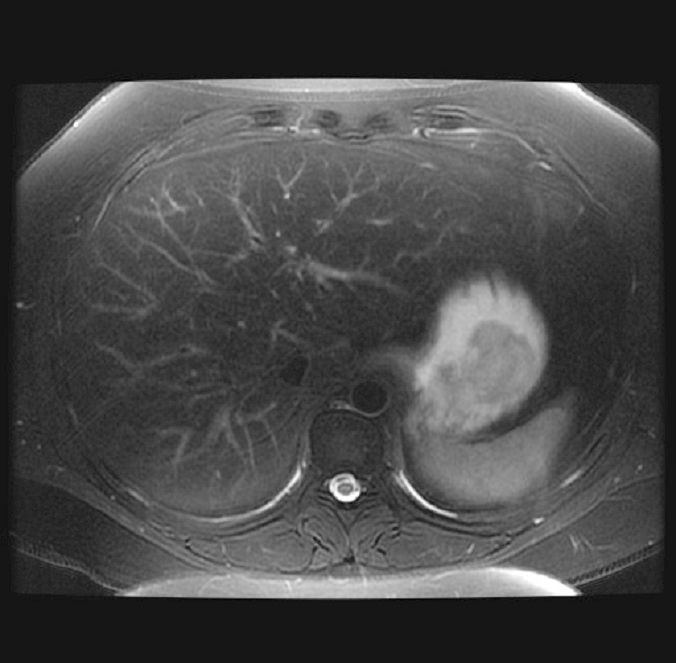
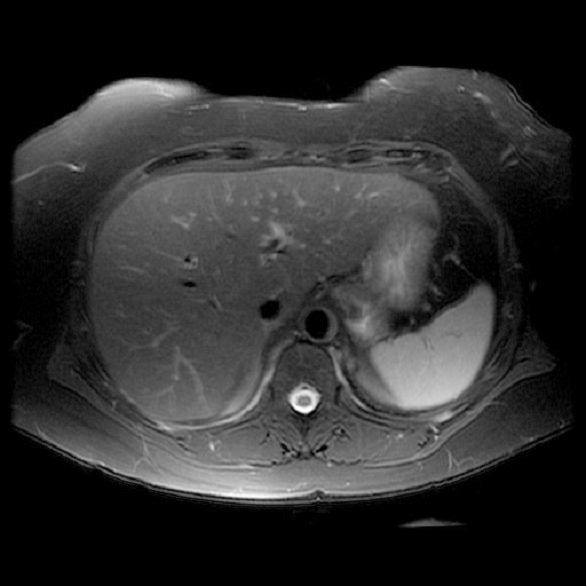
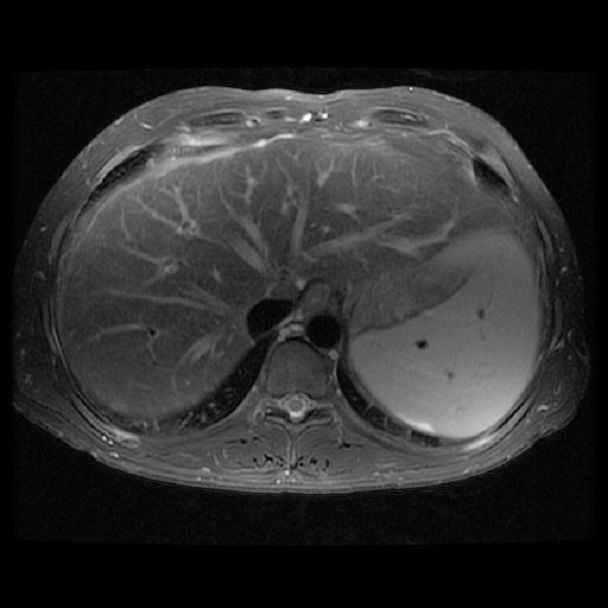

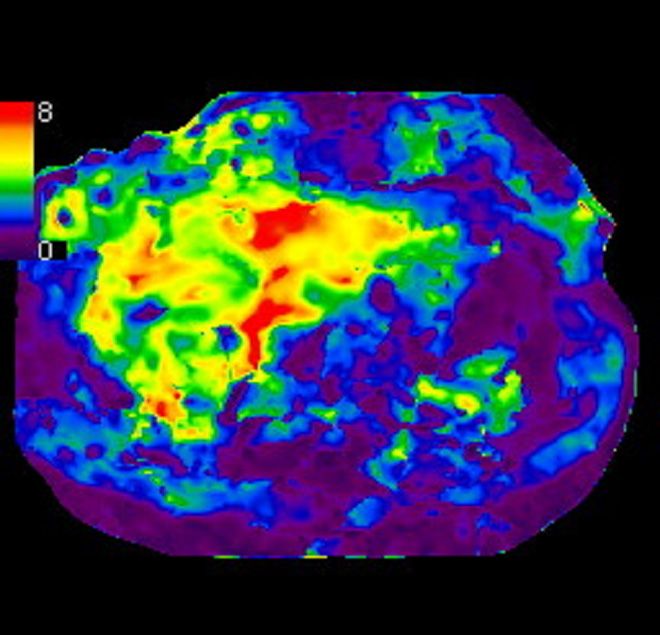
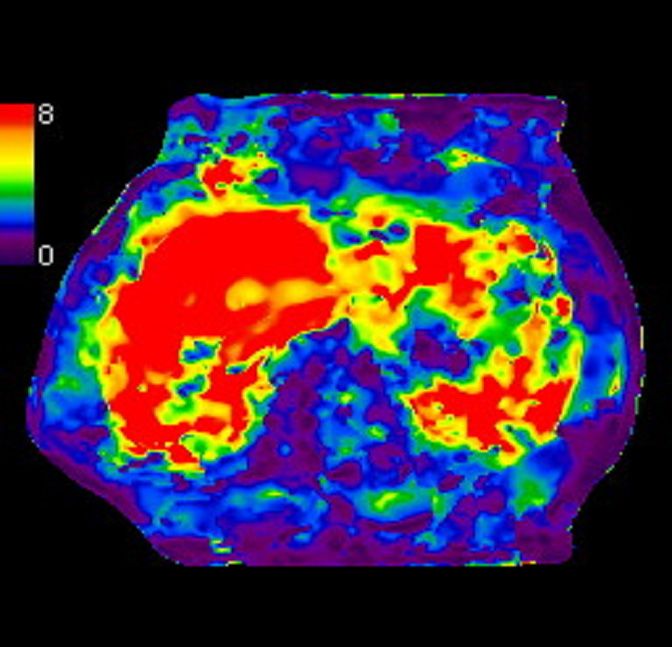
The combined MR elastography method was developed by Dr. Richard Ehman, a professor of radiology at the Mayo Clinic in Rochester, MN. Research staff at GE helped improve the processing software and organize the clinical trials. The method has been fully validated for detecting liver fibrosis and is now being investigated in mammography and a range of other clinical applications by the company and its academic partners.
The Optima MR450w system was unveiled in late 2009, and the first machines with the new technology will be installed in Europe and the U.S. at the end of March. The vendor will also be developing the product for use with other MR units in its range.
One of Toshiba Medical Systems’ main priorities is patient comfort, and it has released the 3T version of its Titan wide-bore scanner. Like the 1.5T version introduced last year, the new machine has a 71-cm diameter tunnel, compared with the industry standard of 60 cm, so is particularly useful in dealing with claustrophobic or bariatric patients.
The company believes that it has overcome many of the common problems with image quality that occurred with earlier generations of wide-bore and 3T scanners. To maintain radiofrequency homogeneity, it has reconfigured the arrangement of magnets around the enlarged tunnel space, and multiple RF coils optimize the field to avoid motion and susceptibility arteficts in deep body scans, according to Alain Bertinatti, senior manager in the company’s MR business unit.
These features should encourage the application of 3T machines beyond musculoskeletal and neurological imaging into cardiovascular and abdominal radiology. The larger bore should increase throughput by making nervous patients more willing to enter the machine and reducing movements once they are inside.
“We cannot say that we will eliminate those sorts of problems completely, but be assured they are significantly reduced,” he said.
Another technology designed to enhance the patient’s experience is the Pianissimo proprietary noise reduction system. Noise levels can reach 100 dB in a conventional 1.5T machine, and up to 120 dB in a 3T unit. Putting the gradient coils inside a vacuum chamber can reduce the level by 30 dB.
Improving workflow is a priority for Siemens, which has introduced the first MR system that incorporates both the Tim (total imaging matrix) advanced coil technology and Dot (day optimizing throughput) engine. The latest versions of these established technologies are available on the new Magnetom Aera 1.5T and Magnetom Skyra 3T units. Both offer a patient-friendly 70-cm open-bore design. The company will also be demonstrating further innovations, including the Tim dockable table, for easy patient preparation outside the MR suite, and an all-new coil architecture incorporating DirectConnect coil design, which provides cableless coils for fast and easy set up and higher signal-to-noise ratio. The combination of new features will help radiology departments cope with an increasingly hectic work schedule, according to Walter Maerzendorfer, chief executive of the MR business unit.
“Tim and Dot are a direct response to today’s demanding world of healthcare economics,” he said. “Together they deliver faster, more efficient throughput for up to 30% more productivity per day.”
Making adjustments for dealing with patients with very different morphologies is one significant cause of delays in the MR suite, but Philips hopes to minimize this problem with its latest offering, the Achieva 3.0T TX. The system’s MultiTransmit RF technology enables users to achieve high-quality results across a wide range of applications, including optimizing body and breast imaging. The multichannel RF transmission facility automatically adjusts its signal to the patient being examined, according to the company.
Using this equipment can deliver enhanced image uniformity and consistency and up to 40% faster imaging, helping to bring 3T units into the mainstream of radiological practice, Philips claims. The technology is available with specific applications in breast, liver, pelvic, and spinal imaging, providing greater throughput due to faster scans and fewer retakes. In the open MR sector, the Aperto Eterna from Hitachi has a single-pillar design and a field strength of 0.4T, which is fundamental to its performance. The product is designed to cover the entire MRI spectrum of scanning applications. Note: a version of this article appeared in the 2010 ECR Today newspaper on Saturday, March 6.
New AI-Enabled Portable Ultrasound May Facilitate 50 Percent Reduction in Cardiac Imaging Scan Time
March 28th 2025Artificial intelligence (AI)-powered measurement capabilities provide key features with the Compact Ultrasound 5500CV device, which was unveiled at the American College of Cardiology (ACC) conference.
Can Photon-Counting CT be an Alternative to MRI for Assessing Liver Fat Fraction?
March 21st 2025Photon-counting CT fat fraction evaluation offered a maximum sensitivity of 81 percent for detecting steatosis and had a 91 percent ICC agreement with MRI proton density fat fraction assessment, according to new prospective research.